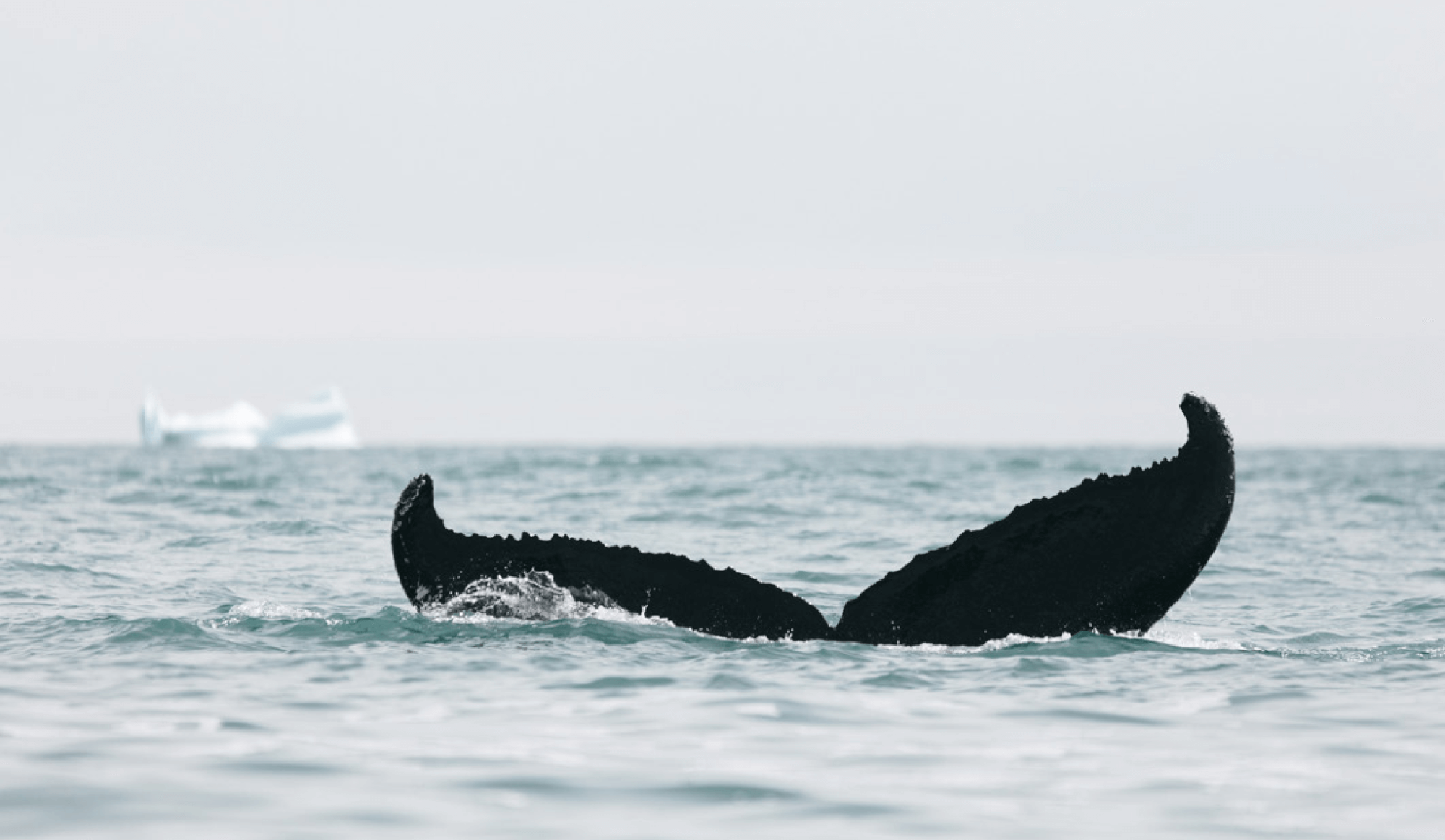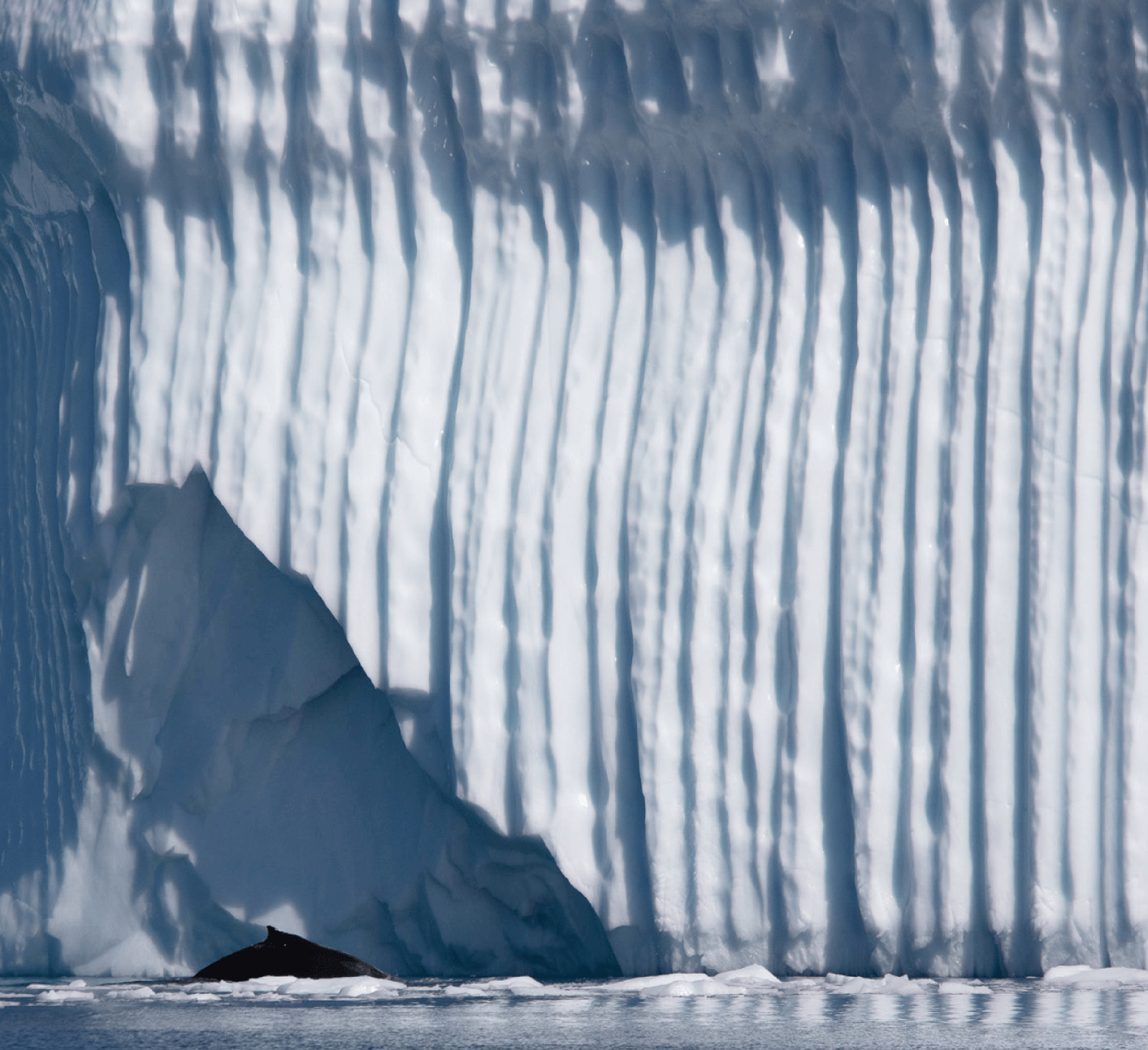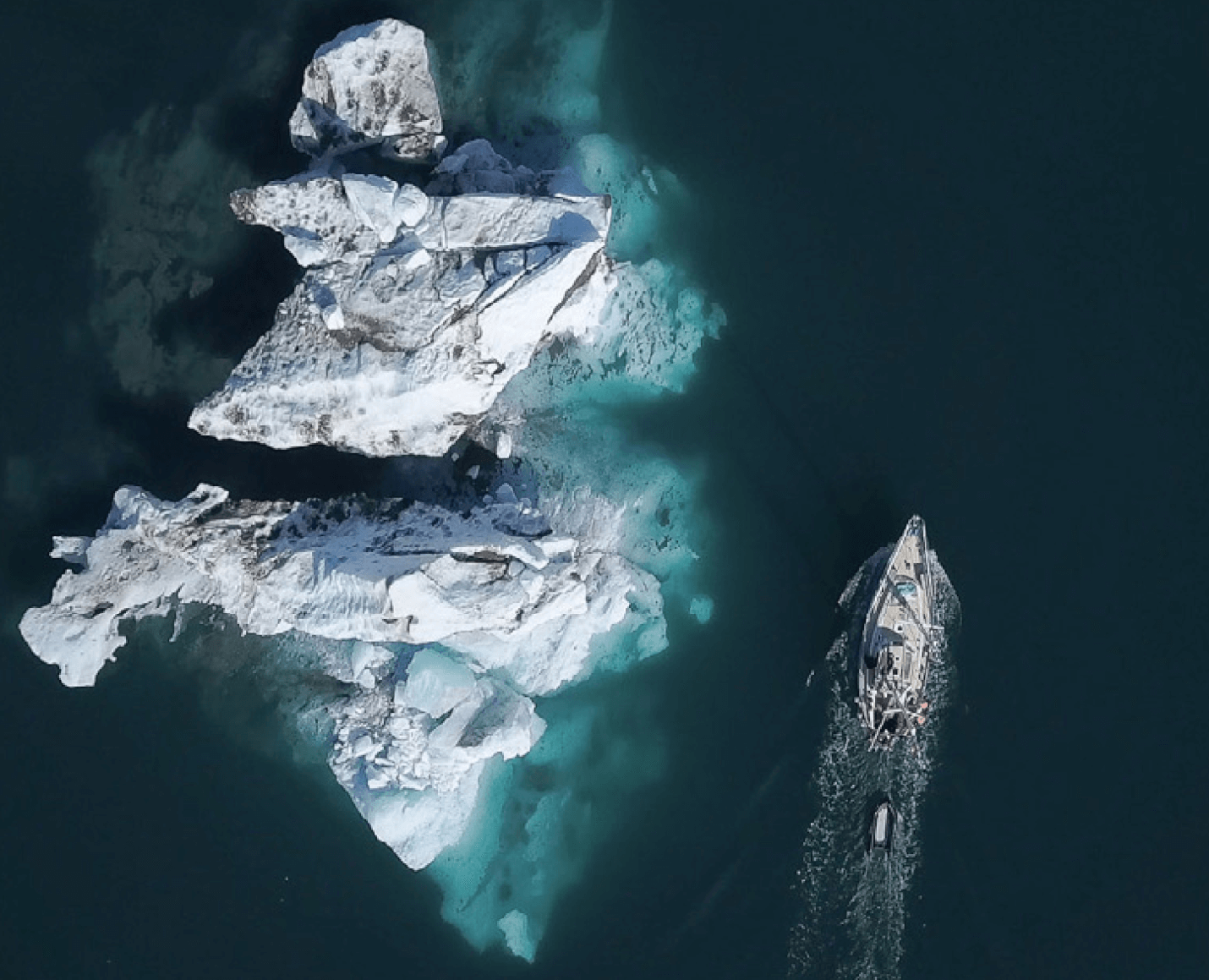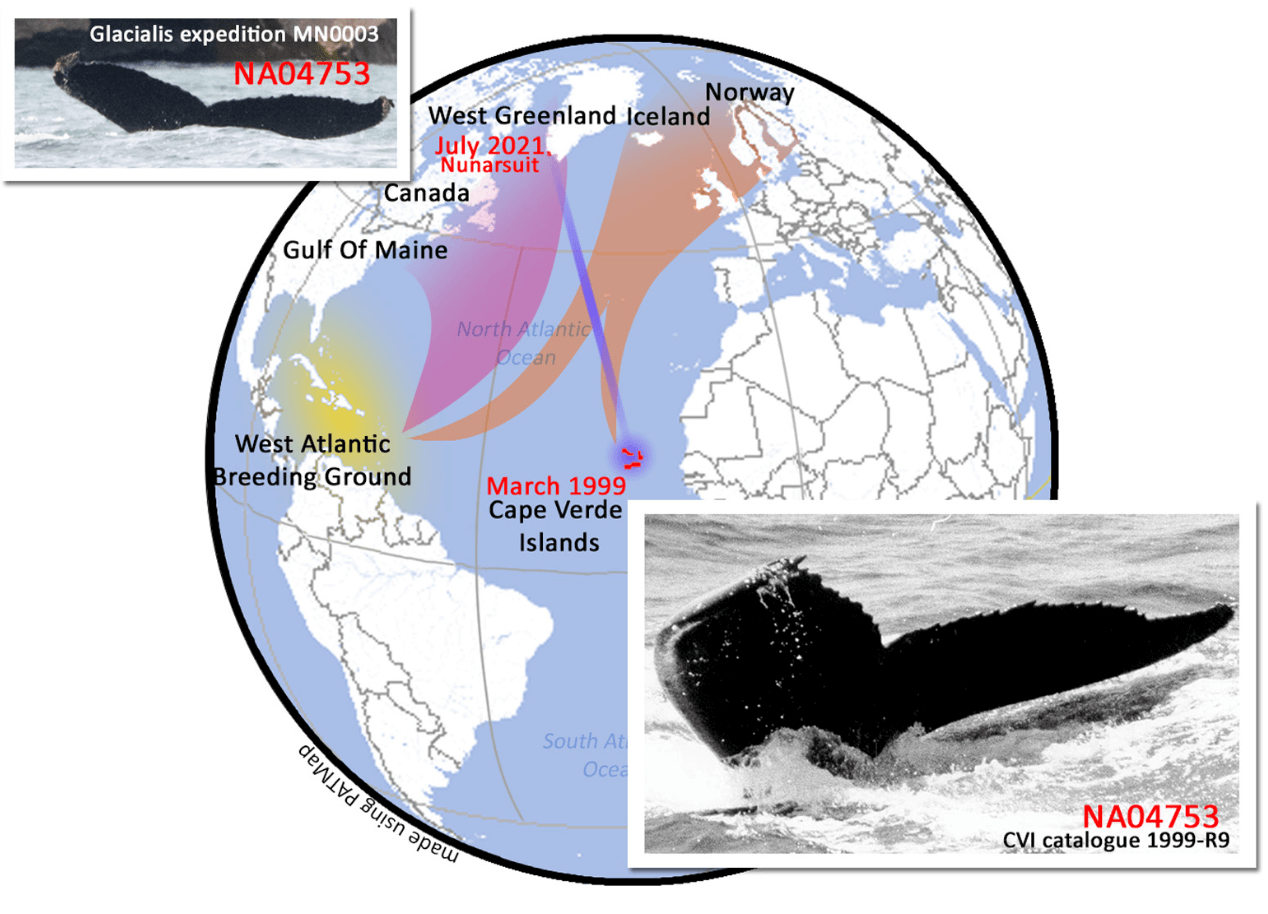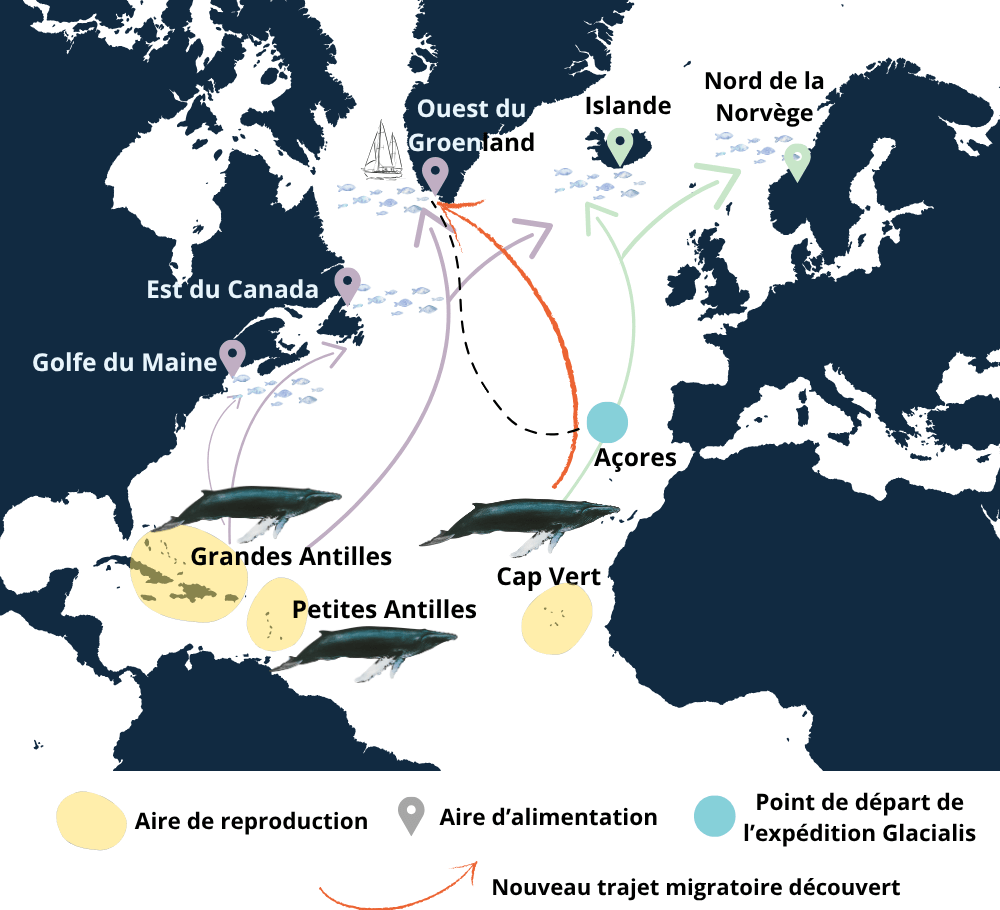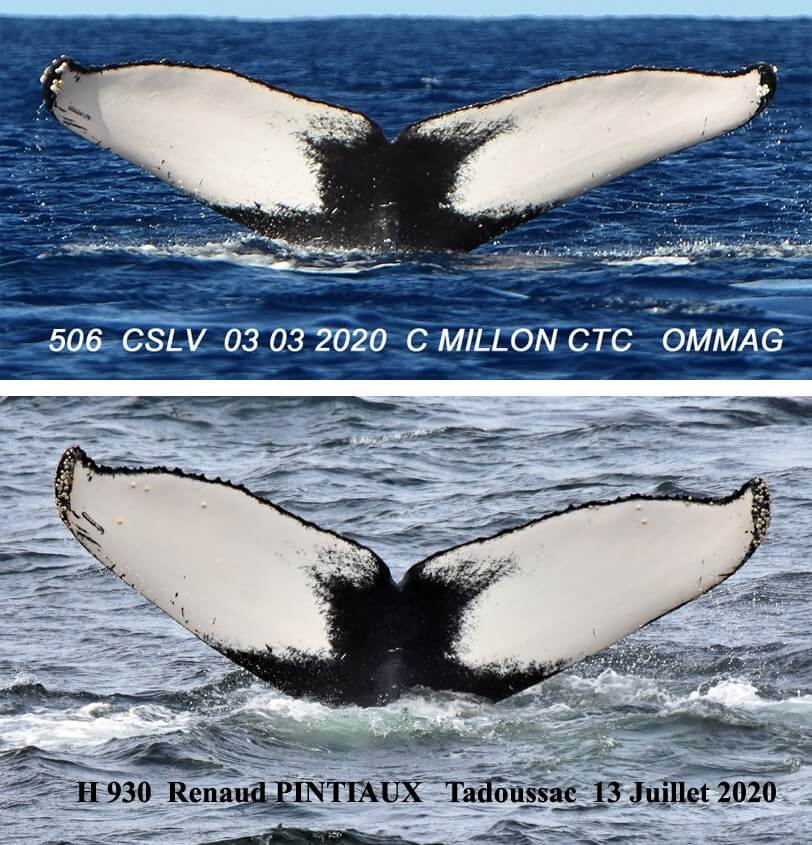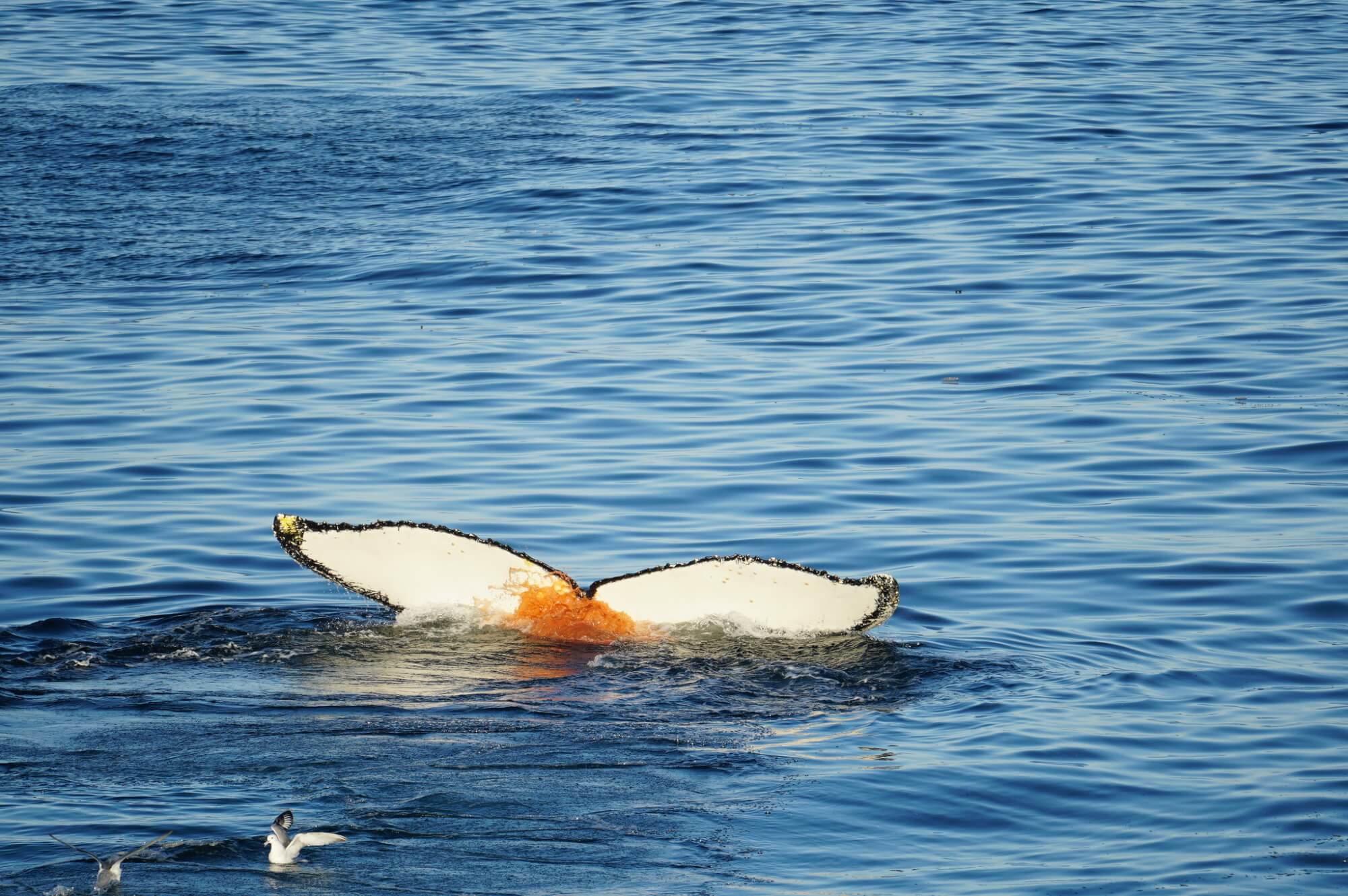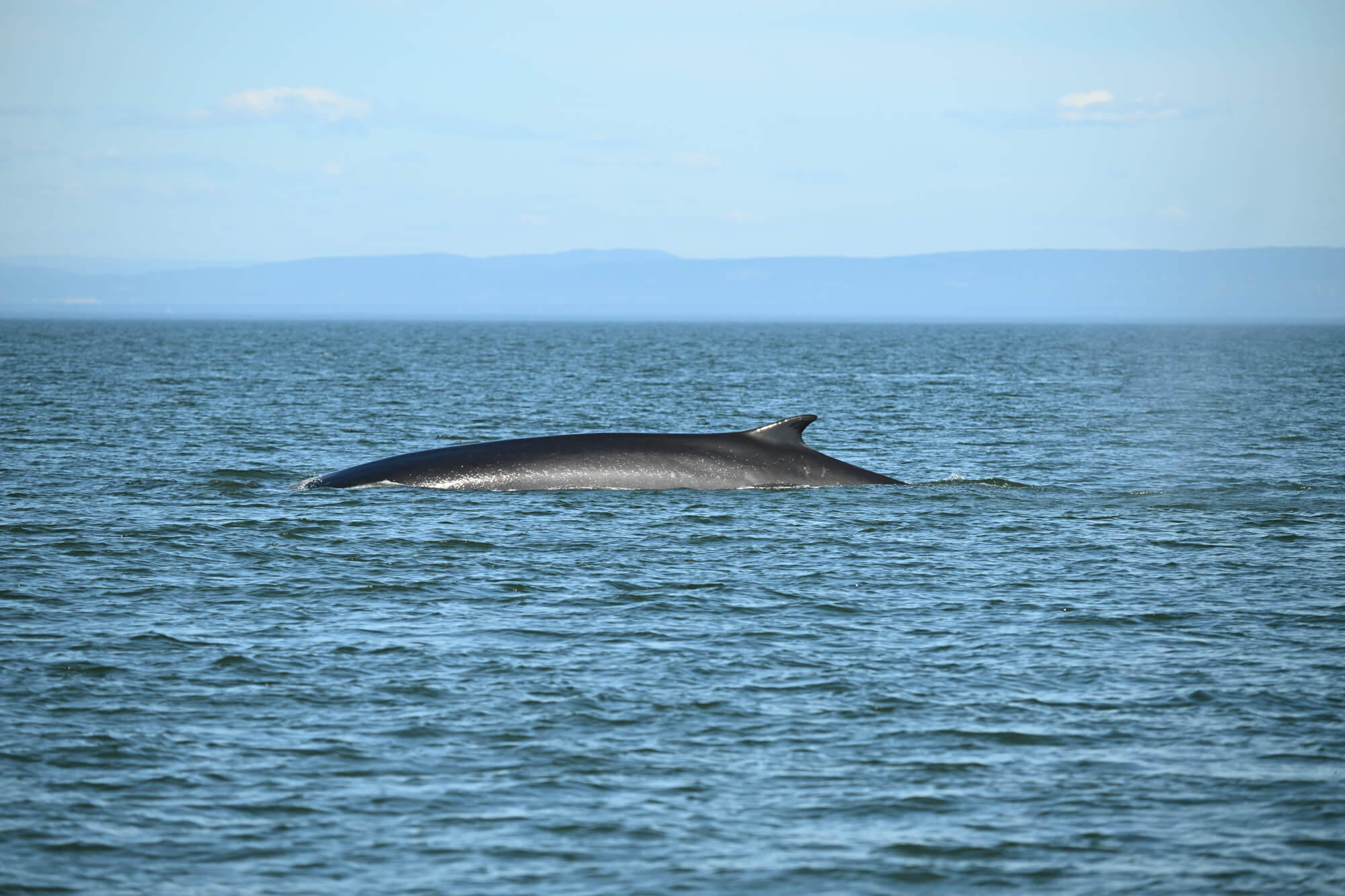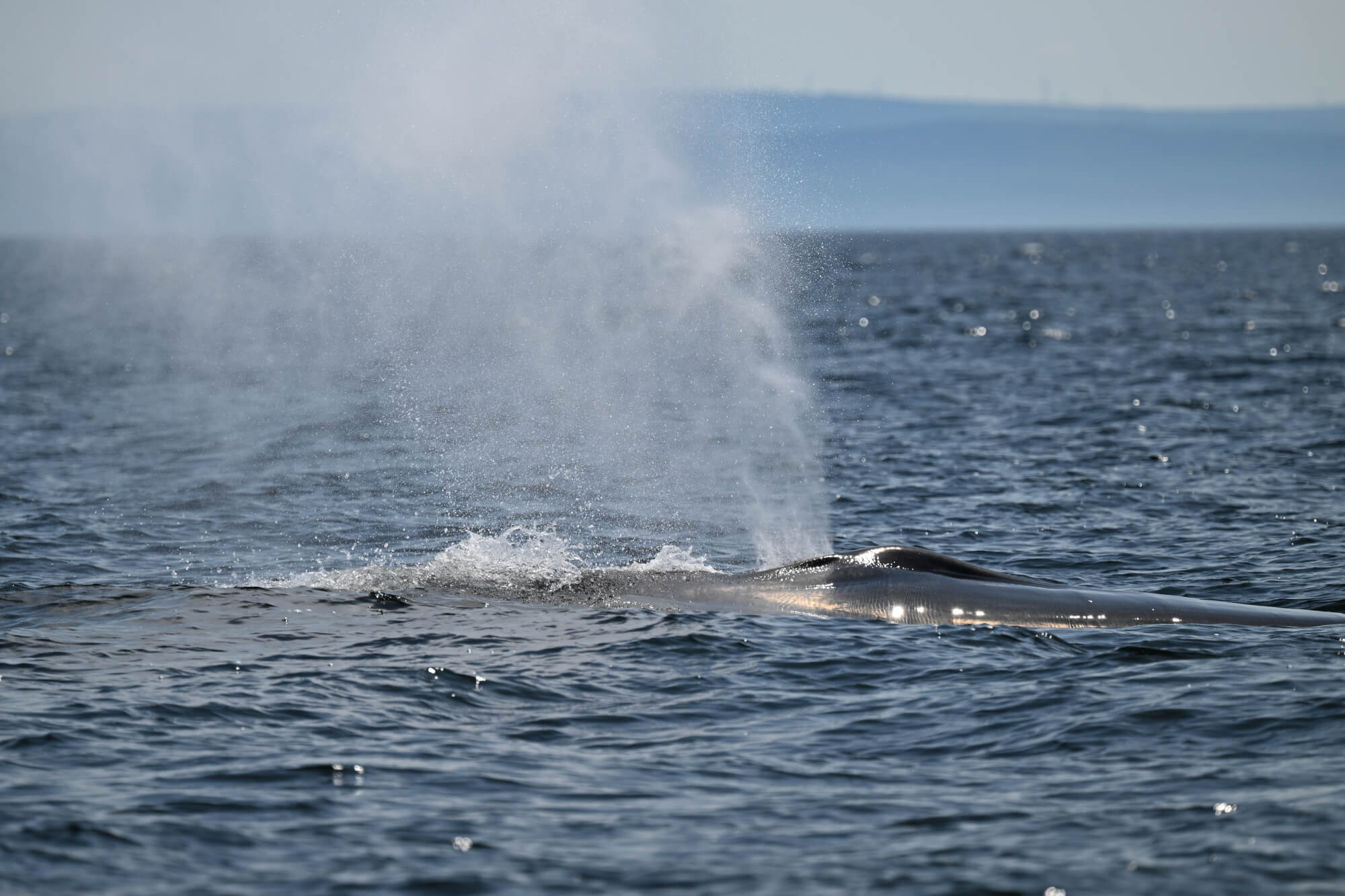What if scientific advances could be made by citizens for citizens? In 2021, Mathieu Marzelière and Laurence Tremblay, two so-called “GREMMlins,” independently participated in establishing the scientific expedition in the Azores. Aboard the sailboat, this international group of experts from various fields conducted a five-month expedition to western Greenland with the objective of building a mobile micro-research platform, collecting data, and studying remote areas.
The expedition consisted of various research projects, from microplastic analysis to the study of ichthyoplankton and environmental DNA, just to name a few. A genuine goldmine for data analysis! One component involved the photo-identification (article in French) of large rorquals with the aim of matching individuals using catalogues from different research groups in the North Atlantic.
Focus on humpbacks
Over the course of 125 days, the expedition covered 11,400 km and observed a total of 2,200 marine mammals. Of the 44 humpbacks that visited the waters off western Greenland, 28 were identified, but there was one individual that stood out… and challenged previously accepted wisdom.
Before going into any further detail, a brief recap is in order. Humpback whales in the North Atlantic use a number of feeding and breeding grounds. Studied for decades, the migratory routes of North Atlantic populations are well known and reflect the fidelity of individuals to their breeding and feeding areas. Humpbacks whose feeding grounds are located in western Greenland, for example, breed in the western Atlantic. Those that feed off Norway and Iceland are associated with all the breeding grounds of the North Atlantic, including those around Cabo Verde.
Now back to our mystery whale. On July 4, the team photographed a previously documented humpback. It was NA04936, a whale featured in the Cabo Verde population catalogue! Photographed for the first and last time in 1999, this individual was never seen again – at least officially – until 2021… 22 years later! This caused surprise and astonishment in the scientific community, but also a bit of concern.
Cabo Verde humpbacks
Considered one of the most endangered in the world (with approximately 300 individuals), this humpback whale population does not appear to have recovered from the devastating effects of intensive whaling, unlike the species’ other populations. The species is classified Least Concern by the IUCN due to its growing population, and it is estimated that between 11,000 and 15,000 humpbacks roam the waters of the North Atlantic.
Implications of this discovery
A scientific article published by Valérie Chosson describes this new discovery. According to the article, the identification of NA04936 is the first confirmation of a migratory movement between Cabo Verde and western Greenland! Given that Indigenous communities in the region are authorized to harvest up to 10 humpbacks a year, subsistence hunting poses a risk to the recovery of this fragile population.
Between 1984 and 2007, the Greenland population increased by 9.4% annually. By 2024, the Greenland Institute of National Resources featured 466 individuals in its catalogue. However, humpbacks in western Greenland are in decline, and are beginning to gravitate toward a new feeding area in the eastern part of the region. This increases the likelihood that an individual will be harvested in the west!
Déjà vu in the St. Lawrence
A year earlier, Mathieu, one of GREMM’s research assistants at the time, encountered a humpback on social media that looked familiar. Thanks to a photo published in 2019, he identified the individual using the catalogue of the Guadeloupe Archipelago marine mammal observatory (OMMAG), with confirmation from OMMAG President Laurent Bouveret. H930 was therefore nicknamed “Guadeloupe.” As with our individual from Cabo Verde, this “match” is somewhat surprising, as of the 462 individuals in the OMMAG catalogue, only three have ever been identified in Canada. Indeed, most humpbacks in the St. Lawrence spend their winters in the Dominican Republic, while those from Guadeloupe prefer the waters of Norway or Iceland. Are humpbacks more adventurous than we think? Time will tell!
Invaluable data sharing
Initiated by Virginie Wys and Mathieu Marzelière, the 2021 expedition redefined our understanding of humpback whale migrations in that it established a link between western Greenland and Cabo Verde. Beyond the implications for the conservation and management of the Cabo Verde population, this advancement underscores the importance of citizen science for conservation and the scientific community. During this expedition, three humpback whale matches were made.
The Glacialis expedition reinforces the idea that science can and should be a collaborative effort. This expedition was made possible with the help of crowdfunding and the full involvement of Captain Arnaud Conne of Atlas , who also provided his sailboat. The citizens who supported this independent project also played an important role, and their involvement contributed to furthering scientific knowledge. Furthermore, collected data were freely and openly shared with teams of international scientists. Above all, data sharing with other research centres and with the public is enriching.
The various projects and techniques on this research platform shared a single objective: to identify important sites for marine mammals with a view to shielding these areas from increasing traffic in the Arctic. Like other expeditions of this type, Glacialis has contributed to this goal.
From October 15 to 19, 2025, the Humpback Whale World Congress will take place in Tadoussac. Learn more here.


